- Home
- Michael Newton
The Texarkana Moonlight Murders: The Unsolved Case of the 1946 Phantom Killer Page 8
The Texarkana Moonlight Murders: The Unsolved Case of the 1946 Phantom Killer Read online
Page 8
For the attention of the files firearms expert there is inclosed two bullets that were fired into the room in which the husband was sitting. The 22 slug found by [name deleted] in left window sill ricocheted off the wall after penetrating [deleted]. The slug located by [name deleted] from the neck of Mr. Virgil Starks is also inclosed. Three cartridge cases are being inclosed all of which were found in the vicinity from which the shots were fired. It is requested that the cartridge cases and slugs be examined and any information developed from your examination be furnished me for assistance in conducting this investigation. There is also inclosed a slug of unknown origin and it is requested that this slug be compared with the two known slugs in an effort to determine if they were fired from the same gun.
There are being inclosed herewith three film pack marked No. 1, 2 and 3, initialled WDP and HSH, which contain exposed film of the blood foot prints, mud impressions and the interior of the house as well as the window through which the bullets were fired. It would be appreciated if you would furnish me a copy of the photographs or the negatives so that additional copies could be made.
There is also transmitted a portion of brown wrapping paper on which there is believed to be blood, which paper was located just outside the window through which the subject entered and escaped from the house. It is requested this be compared with blood types of the two victims to determine whether or not it is some of their blood that has been tracked out of the house.12
The sheriff’s second letter described further items removed from the Starks murder scene. It read:
I am transmitting herewith the back of one chair and it is requested that this back be examined for any latent finger impressions that may exist thereon. There is also inclosed one film pack of latent finger prints throughout the house and it is requested that this film pack be developed to ascertain whether or not any impressions are of sufficient value for identification purposes. If any finger impressions are sufficient for identification purposes, it is requested that these finger prints be compared to the unidentified finger prints of the James Paul Martin and Betty Jo Booker slaying of April 14, 1946, and the finger prints in the case of Richard Griffin and Polly Ann Moore, March 26th 1946. These prints were forwarded by the Department of Public Safety, Austin, Texas, for the murders that occurred in Texarkana, Texas.
I am inclosed herewith finger prints of Virgil Starks for elimination purposes and as soon as [one-half line deleted] being fingerprinted, [deleted] will be forwarded for elimination purposes.
There is also being inclosed herewith one flashlight that was found at the same spot in which the shooting occurred and it is requested that this flashlight be examined for any latent finger prints that will be of assistance in this investigation.13
That flashlight, with a red handle, later entered journalistic history. On May 29, the Texarkana Gazette ran a front-page photograph of it spanning four columns—the first-ever newspaper photo including spot color.14 The accompanying caption read: “HAVE YOU SEEN THIS TWO-CELL FLASHLIGHT?—This is a picture in detail of the flashlight found at the scene of the Starks murder. This is a two-cell, all metal flashlight, both ends of which are painted red. Three rivets hold the head of the flashlight to the body of the light. There has been only a limited number of these lights sold in this area. If you have owned or know of any one who owned one of these lights, report at once to Sheriff W. E. Davis, Miller county courthouse, Texarkana, Ark. You may be the one to aid in solving the phantom slayings.”15
The auto tire tracks referred to by Sheriff Davis were found after Chief Haynie arrived from Hope with his bloodhounds. The dogs followed the killer’s scent and footprints for two hundred yards from the Starks home, to Highway 67, then across the pavement and another half-mile farther on, before the trail abruptly stopped. Tire impressions in mud revealed where the slayer had left his getaway car. A later report, published by the Gazette twenty-five years after the fact, refers to two trails, one approaching the house from Highway 67 and another retreating toward the highway.16
The interior of the Starks home, meanwhile, presented a grisly sight. When Virgil was shot, his heating pad had shorted out and burst into flames, scorching his chair and filling the death room with smoke. Aside from Katy’s trail of blood and shattered teeth, muddled by the gunman’s footprints, police also found bloody handprints on the walls and furniture, suggesting that the killer had dipped his hand in Virgil’s blood and left the macabre decorations deliberately. Whether that action represented a fit of rage over Katy’s escape, as one author suggests, or some more bizarre pathology, remains unexplained. Police ruled out robbery as a motive, after finding “a considerable amount of money” untouched in the house, with still more—plus some jewelry—in Katy’s handbag.17
Authorities knew instantly that the Phantom—if this was the Phantom—had abandoned his .32-caliber semiautomatic weapon for a .22-caliber in the latest attack. The .22 was another semiautomatic, demonstrated by ejection of three cartridges recovered at the scene, prompting Sheriff Davis to speculate on May 4 that it was “possibly an automatic rifle.”18 The Arkansas Democrat repeated that speculation as fact five days after the shooting.19 FBI analysts disagreed on May 7, reporting that the cartridges—all linked to the same gun by microscopic examination—“may have been fired from [a] twentytwo [sic] Colt automatic pistol or revolver.” Three bullets received from Sheriff Davis were “similar [to] caliber twenty two [sic] Long Rifle Western Lubaloy,” but the lab found “no marks thereon suitable for comparison purposes.”20
“Lubaloy” is short for “lubricating alloy,” the trade name of a copper-washed bullet jacketing material introduced by the Western Cartridge Company in 1922. It replaced standard bullet jacketing made from cupro-nickel coated steel or solid cupro-nickel, found over time to damage firearm performance as fragments of hot jacketing were deposited near the end of the barrel, eventually creating a hazard for shooters or destroying the barrel. The new material, dubbed Lubaloy C41100, was a wrought copper alloy consisting chiefly of copper and zinc.21 One of countless cartridges manufactured using Lubaloy C41100 was the .22 Long Rifle rimfire cartridge, pioneered by J. Stevens Arms & Tool Company (now Stevens Arms) in 1887. Suitable for use in both rifles and handguns, countless millions of .22 Long Rifle rounds have been manufactured by Western Cartridge since 1922.22
These particular .22 rounds, however, told investigators very little. After their first, erroneous suggestion that the cartridge cases may have been fired in a revolver—which would not eject the cases unless manually, deliberately unloaded by the shooter—FBI analysts revised their opinion, reporting on May 8 that the cartridges “bear extraction marks indicating they have been loaded into and extracted from [an] automatic weapon similar to [a] Colt Woodsman pistol.”23 Designed by John Moses Browning, the Woodsman was manufactured by Colt in three series—the Woodsman Sport, Woodsman Target, and Woodsman Match Target—from 1915 through 1977. While designed primarily for target shooting, the Woodsman has also been employed in modern times, fitted with a silencer, as a close-range assassin’s weapon.24
Despite the FBI’s determination that the killer’s weapon was a semiautomatic pistol, Sheriff Davis nonetheless kept looking for revolvers. He found one in the possession of a U.S. Marine, confiscated at Shreveport, Louisiana, and test fired the pistol, sending a sample bullet and cartridge case to the FBI lab on May 28, 1946.25 The bureau’s report, filed four days later, declared that the new weapon’s firing pin left a distinctly different impression on the cartridge submitted than those on casings found at the Starks home. As for a bullet comparison, the three Starks slugs had been returned to Sheriff Davis, apparently without photographs being taken, and so could not be compared with the Shreveport bullet unless they were returned to Washington.26 As of June 21 they had not come back from Arkansas, but it would hardly have mattered, since the FBI had shipped the Shreveport bullet back to Texarkana on June 6.27
FBI technicians did not stop their search with attribution of the
murder bullets to some unknown Colt Woodsman, however. A laboratory worksheet in the Phantom file reveals that they also compared the Starks slugs to bullets fired from various other .22-caliber weapons, labeled “K3” through “K10.” That list included:
K3—Three cartridge cases and one bullet allegedly fired from Remington .22 rifle serial [number deleted]
K4—One cartridge fired [from a] 16 shot bolt action rifle property of [name deleted]
K5—One caliber .22 bullet and cartridge case fired from caliber .22 Winchester Model 69 [a bolt-action rifle]—[serial number deleted]
K6—One caliber .22 bullet and cartridge case fired from caliber .22 Remington bolt action rifle, model 5-12; [serial number deleted]
K7—One caliber .22 bullet and cartridge case fired from caliber .22 sawed-off pistol [serial number deleted]
K8—One caliber .22 bullet and cartridge case fired from caliber .22 Winchester Repeater rifle, Model 1906 [serial number deleted]
K9—One caliber .22 bullet and cartridge case fired from caliber .22 Remington rifle, model 41 [serial number deleted]
K10—Caliber .22 bullet and cartridge case fired from caliber .22 Remington rifle model 34 [serial number deleted]28
While not specifically identified, those weapons were undoubtedly drawn from the FBI’s immense collection of confiscated firearms. No record exists of their submission for testing by Texarkana authorities, and none matched the Starks samples, but at least they should have laid to rest assertions that the killer had used a rifle. Strangely, decades later, two authors claimed that Starks was killed with a nonexistent firearm, “a .22-caliber semi-automatic shotgun.”29
The Starks ballistics evidence was problematic. Based on FBI reports, the cartridge cases could be traced to a specific weapon, if investigators ever found one, but the slugs could not. Without a firearm to examine, Texarkana’s manhunters focused their hopes on other evidence the killer left behind.
Sheriff Davis anxiously awaited news from Washington about the fingerprints and a palm print recovered from the latest murder scene, hoping that others might be found on the discarded flashlight and on furniture submitted for examination. On May 8, J. Edgar Hoover advised the bureau’s Communications Section that “no latent impressions of value [were] developed on [the] flashlight or back of chair. One latent palm print of value for comparison purposes appears in negative number one. Sheriff Davis not advised telegraphically.”30 Davis got the bad news on May 9, in more abbreviated form: “Batteries, bulb and reflector on inside of flashlight examined but no latent impressions developed.”31 A letter from Hoover to Davis, mailed the following day, provided more details.
You are advised that the flashlight and back of a chair were examined, but no latent impressions of value for identification purposes were developed. The negatives developed from the film pack were also examined and one latent palm print appearing in negative #1 was noted to be of value for comparison purposes. Photographs of this impression have been prepared for inclusion in the Bureau’s files and should you desire to submit the palm prints of any suspects in connection with this matter, I shall be pleased to cause appropriate comparisons to be conducted. The specimens submitted are being returned under separate cover.
The latent impressions developed in the instant case could not be compared with the latent impressions developed in the slaying of James Paul Martin and Betty Jo Booker on April 14, 1946, and with the fingerprints developed in the case of Richard Griffin and Polly Ann Moore, March 25, 1946 [sic], inasmuch as this Bureau does not have any record of latent fingerprints having been received from the Department of Public Safey, Austin, Texas, in connection with the afore-mentioned cases.32
Hoover’s final statement clearly conflicts with FBI documents released to public scrutiny in 2006, stating that unidentified latent prints were submitted for examination in both of the previous cases.33 A second letter, sent to Davis on May 15, reported that prints were now available from the Martin-Booker scene. It read:
You are advised that three latent fingerprints were received on May 14, 1946, from the Department of Public Safety, Austin, Texas, in connection with a case entitled “Betty Jo Booker, James Paul Martin, Victims; Texarkana, Texas, Murder.” These impressions could not be compared with the latent palm print developed in the Starks murder, inasmuch as it is not possible to compare fingerprints with palm prints. Accordingly, should you desire to submit the name or fingerprints and palm prints of any possible suspects in connection with these murders, I shall be pleased to cause the approprisate comparisons to be conducted.34
What of the footprints photographed inside the Starks home and cast in plaster outside? On May 8, Hoover advised Sheriff Davis that the “questioned footprint impression as shown on cast [was] made by [a] left shoe approximately nine and one half to ten and one half in size. Front portion of outer sole appears to have been cut or torn away and another portion folded back. No identifying marks to determine make or style of heel. May be possible to identify questioned impression with known shoe if shoe not worn too much before found. Nothing of value noted as to footprints on pieces of linoleum.”35
The blood submitted for examination also led investigators nowhere. On May 10, the FBI lab reported that “[a]s a result of grouping tests conducted on the human blood appearing on the pieces of linoleum, specimen Q1, it was ascertained that this blood was derived from an individual belonging to International Blood Group ‘O.’ The human blood contained in two vials, specimens Q5 and Q6 [from Virgil and Katy Starks], was determined to be derived from an individual belonging to International Blood Group ‘O.’ Two small spots of human blood were also found on the brown wrapping paper, specimen Q2; however, the amount of blood on this paper was too limited for a grouping determination. Preliminary chemical tests for blood were obtained on the right kitchen window curtain, specimen Q3, but the amount of stain thereon was too limited to confirm the presence of blood or determine its origin. No blood was found on specimen Q4 [the left kitchen window’s curtain].”36
It was another dead end. Both shooting victims belonged to the same blood group, shared by 40 percent of all United States residents.37 No further classification was possible using the technology available in 1946.
Authorities had no better luck tracing the killer’s automobile from tire impressions found along Highway 67 on the morning after the murder. On May 8, 1946, Hoover advised Sheriff Davis that the “tire impression [was] similar in style and design to[an] Allstate passenger car tire. Exact size not determined because of nature of casts. Appears to be near sizes five fifty by seventeen and six hundred by sixteen or larger.”38 A subsequent report, stating that the tire impression found near Highway 67 was “similar to those in earlier cases” appears to have no foundation.39
While inconclusive, that news produced an intriguing lead from Texarkana on May 27. On that date, Sheriff Davis provided the FBI’s Little Rock field office with bullets and cartridge cases fired from various .22-caliber firearms. The Little Rock memo to Hoover goes on to say: “There is also transmitted herewith one vial containing dried blood, and it is requested that this be examined to determine whether or not it is human blood, and if possible, the typing. The blood was removed from a fender of a 1935 Ford four-door Sedan, which was parked at the Red River Arsenal. This car contained four All-State [sic] tires, and it is believed that an automobile was in the vicinity of the Starks home the night of the murder which had All-State tires thereon.”40
The Ford’s owner has not been publicly identified. On August 23, 1946, Hoover informed his Little Rock office that the blood sample removed from its fender was “unsatisfactory for blood grouping.”41
Other evidence collected at the Starks home, all ultimately inconclusive, was summarized in an FBI lab report on May 10, 1946. In addition to ballistics evidence, blood samples, footprints and tire tracks, it said:
Traces of soil were found on the pieces of linoleum numbered 1, 2, and 3 and also on specimen Q3 [a curtain from the right kitchen w
indow]. The soil on the number 1 and 3 pieces of linoleum was different in color from K1 [identified simply as “sample of soil,” source undisclosed] but was contaminated with blood which may have affected the color. The amounts were too small to analyze and compare. The soil removed from the number 2 piece of linoleum was different in color and other characteristics from K1 and did not come from the same source. The trace of soil on the curtain, Q3, was too small to compare with K1.
Specimen Q4 [a curtain from the left kitchen window] contained a trace of cobwebs and insect material and a small sliver of wood, the significance of which is not known. The pieces of linoleum numbered 4 and 5 contained no soil of value. No further material of significance was found on the curtains.
No hair was found in the folded paper, specimen Q7 [identified as “one sample of hair from top of kitchen table”]; however, one dark purple wool fiber was found in the cellophane wrapper in which the paper was contained. The source of this fiber is not known.42
* * *
Virgil Starks was laid to rest at 2:30 P.M. on Monday, May 6. His widow, still recovering at Michael Meagher Memorial Hospital, did not attend the service.43 That evening, J. Q. Mahaffey interviewed Dr. Anthony Lapalla, a psychiatrist employed at Texarkana’s Federal Correctional Institution, to obtain a profile of the Phantom Killer. As Mahaffey explained in the next day’s Gazette: “If one and the same man is responsible for the five murders that have been committed here since March 24, the Gazette feels that the public should know the type of man with which the community is dealing.... This interview was sought, and was given, in the interest of the public and the intent is not to alarm unduly anyone, but to give everyone the benefit of what is considered an expert opinion as to the mental behavior of the man sought in these crimes.”44
Ignoring February’s attack, Dr. Lapalla opined that one person was responsible for all three shootings, profiling the gunman as a white man “about middle age, between the middle 30s and 50 years old.” The Phantom was a sadist, said Lapalla, “motivated by a strong sex drive.” Such criminals, in his experience, were generally “intelligent, clever, and shrewd,” often avoiding apprehension forever. Lapalla ruled out African American suspects on grounds that “[i]n general negro criminals are not that clever.”45

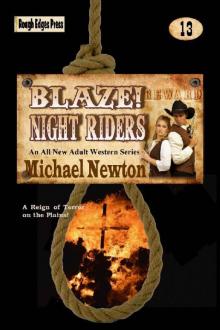 Blaze! Night Riders
Blaze! Night Riders How to Write Action Adventure Novels
How to Write Action Adventure Novels Blaze! Bad Medicine
Blaze! Bad Medicine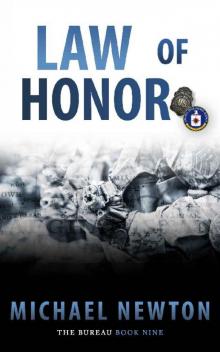 Law of Honor
Law of Honor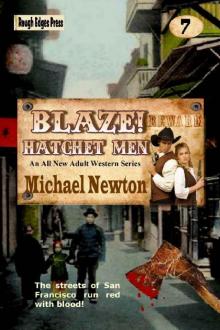 Blaze! Hatchet Men
Blaze! Hatchet Men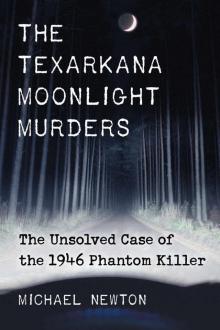 The Texarkana Moonlight Murders
The Texarkana Moonlight Murders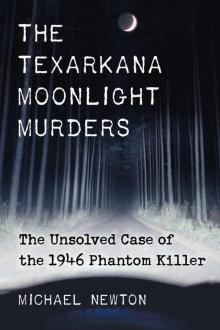 The Texarkana Moonlight Murders: The Unsolved Case of the 1946 Phantom Killer
The Texarkana Moonlight Murders: The Unsolved Case of the 1946 Phantom Killer